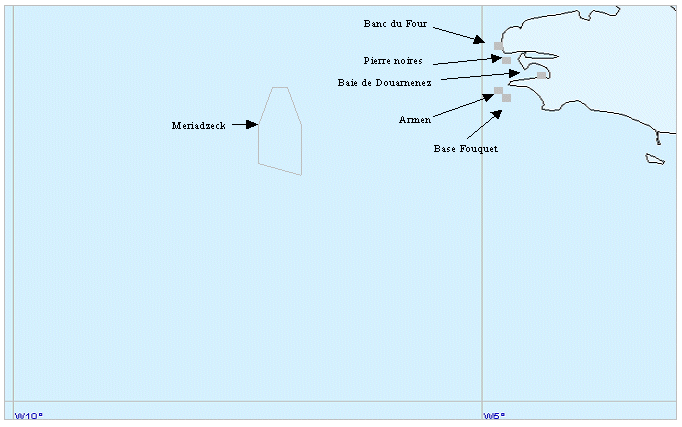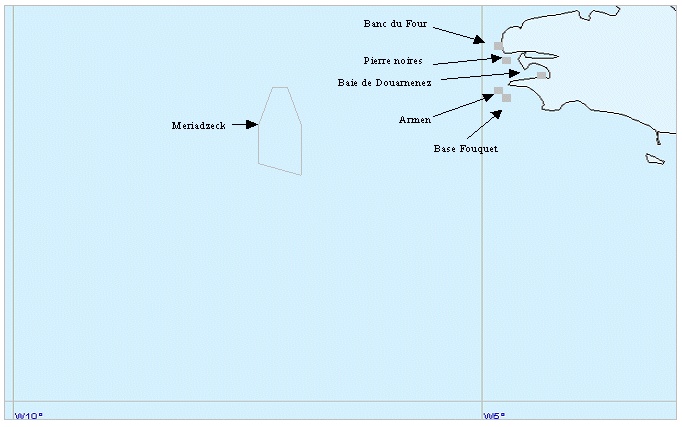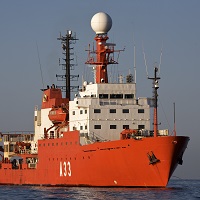Keyword
magnetometers
13 record(s)
Type of resources
Categories
Topics
INSPIRE themes
Keywords
Contact for the resource
Provided by
Years
Formats
Status
-
<p>The purpose of WestMedFlux is to study thermal fields in ocean-continent transition zones in the Western Mediterranean, and the role of fluids and salt diapirs on the thermal field.</p>
-

<p>Technical trials for NAUTILE, SYSIF, SMF RESON, GAPS and MATS equipment. The trials cruise had 2 legs: Leg 1 from 04/05/09 to 15/05/09 (Brest - La Coruna) and Leg 2 from 16/05/09 to 19/05/09 (La Coruna - Funchal).</p>
-

<p>?The cruise took place from 22 November to 20 December 2006 aboard RV L'Atalante. Its objective was to study the formation of passive continental margins and a special sedimentary sequence which exists all over the Mediterranean. The result of national (IUEM Brest, Géosciences Azur, University of Lille, UPMC) and European (Universities of Lisbon and Bologna, GEOMAR and AWI) cooperation, directed by Ifremer, the cruise mobilized some twenty scientists for nearly one month. The related project is GDR Marges.</p>
-

<p>The multi-annual partnership-based research programme SPIRAL (deep seismic and regional investigation in northern Algeria) aims to study the deep structure of the North Algerian margin using "high penetration" seismic methods: low frequency vertical reflection shooting, as well as wide angle reflection and refraction with deployment of listening stations on the seabed and onshore. The first strand of the SPIRAL programme SPIRAL involves the sea cruise to acquire geophysical data. This cruise took place aboard RV L'Atalante in two legs, respectively from 26/09 (Oran) to 10/10 2009 (Annaba) and from 13/10 (Annaba) to 10/11 2009 (Oran). These two legs provided acquisition of wide-angle seismic and penetrating multichannel seismic reflection data, which was the main objective of the project, as well as additional data like very high resolution (Chirp or sediment sounder type), magnetic and gravimetric, and multibeam bathymetric echosounder data. The profiles acquired during SPIRAL should supply elements to characterize the structural levels in and under the sediment cover (crust) down to the mantle in the targeted zones given in the cruise report; obtain accurate images of faulted and folded area and the major boundaries like the Moho; constrain the physical and rheological properties (particularly velocity models) which should help determine things like the nature of the crust at the continent-ocean transition. These constraints will make it possible to perform thermo-mechanical modelling on the scale of the Maghrebide belts to the base of the crust (temperature, density) and thus specify the main boundaries of the large crustal domains.</p>
-

The objectives of the DETSUFA cruise (BIO Hespérides 04/03–17/03/2013) are (1) to evaluate the footprint in the seafloor of a series of earthquake-generated subaerial landslides that took place in Fiordo de Aysén, Chile, in 2007, which entered the seawater generating a number of destructive tsunamis which killed 10 and produced significant damage in the local infrastructure, (2) to reconstruct the morphology and dynamics of these landslides in order to obtain input data for tsunami modelling, and (3) to determine the occurrence of similar episodes in the past that might have generated other tsunamis, in order to establish a possible recurrence period of such events. The cruise fits within the global scientific interest stirred up by tsunamis in general, being the Fiordo de Aysén a highly relevant analogue for the understanding of this kind of events occurring in semi-enclosed basins such as fjords, lakes or water dams, which often harbour large human population and infrastructures.
-

Investigate
-

Seamount evolution related to tectonics and influence on recent sedimentary systems
-
Investigate the deep crustal structure of the Alboran sea
-

Investigate the deep crustal structure of the Alboran sea
-

Investigate the Spanish Continental Shelf West Off Canary Island
 Catálogo de datos del IEO
Catálogo de datos del IEO